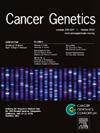55.推进膀胱癌诊断:BCDx 多组学方法的创新潜力
IF 1.4
4区 医学
Q4 GENETICS & HEREDITY
引用次数: 0
摘要
在液体活检中使用多组学生物标记物正在成为提高疾病检测准确性的一种有前途的方法。然而,它也面临着巨大的挑战,例如整合和解释来自不同奥米克层的数据非常复杂,耗时长、通量低、成本高。此外,目前还没有一种简单的仪器能够同时检测所有的 omics。Early Is Good (EIG) 开发了多微米集成平台 (MIP),以应对早期疾病检测中的这些挑战。MIP 可以使用标准平板阅读器同时检测 DNA、RNA 和蛋白质,并利用金纳米粒子的局部表面等离子体共振 (LSPR) 来增强生物发光共振能量转移 (BRET) 读出信号。新颖的 MIP 检测技术应用于早期膀胱癌复发监测,使用的多组学生物标记物面板包括 miRNA、mRNA、lncRNA 和蛋白质。目前鉴定膀胱癌(BC)的方法包括膀胱镜检查和尿液细胞学检查。膀胱镜检查对高级别肿瘤的灵敏度为 97%,但具有侵入性、依赖操作者且成本高昂。它经常会漏诊小肿瘤或原位癌,约有一半的患者会发展为肌肉浸润性膀胱癌(MIBC)。它还会引起排尿困难(50%)、血尿(19%)和尿路感染(3%)等副作用,导致不适、焦虑和尴尬。尿液细胞学检查对高级别肿瘤的敏感性为 80-90%,特异性为 98-100%,但对低级别肿瘤的敏感性较低(4-31%),假阳性率也较高。这凸显了对 MIP 等创新方法的需求,MIP 具有无创、高灵敏度和全面的检测能力,有可能改变膀胱癌的临床治疗。通过结合多组学生物标记物,MIP 对膀胱癌复发监测的灵敏度和 NPV 分别达到了 100%和 100%。本文章由计算机程序翻译,如有差异,请以英文原文为准。
55. Advancing bladder carcinoma diagnosis: The innovative potential of the BCDx multi-omics approach
The use of multi-omic biomarkers in liquid biopsies is emerging as a promising method for enhancing disease detection accuracy. However, it faces significant challenges, such as the complexity of integrating and interpreting data from various omic layers, which is time-consuming, low-throughput, and costly. Additionally, there is currently no simple instrument capable of detecting all the omics simultaneously. Early Is Good (EIG) has developed the Multi-Omic Integration Platform (MIP) to tackle these challenges in early disease detection. MIP can detect DNA, RNA, and proteins simultaneously using a standard plate reader, employing localized surface plasmon resonance (LSPR) of gold nanoparticles to enhance the bioluminescence resonance energy transfer (BRET) readout signal.
The novel MIP assay technology is applied to early bladder cancer recurrence monitoring using a multi-omic biomarker panel that includes miRNA, mRNA, lncRNA, and proteins. Current methods for identifying bladder cancer (BC) involve cystoscopy and urinary cytology. Cystoscopy, with 97% sensitivity for high-grade tumors, is invasive, operator-dependent, and costly. It often misses small or carcinoma in situ tumors, which can progress to muscle-invasive bladder cancer (MIBC) in about half of the patients. It also causes side effects like dysuria (50%), hematuria (19%), and urinary tract infections (3%), leading to discomfort, anxiety, and embarrassment. Urinary cytology, with 80-90% sensitivity and 98-100% specificity for high-grade tumors, struggles with low sensitivity (4-31%) for low-grade tumors and has a higher rate of false positives. This highlights the need for innovative approaches like the MIP, which offers non-invasive, highly sensitive, and comprehensive detection capabilities, potentially transforming the clinical management of bladder cancer. MIP has shown 100% sensitivity and 100% NPV for bladder cancer recurrence monitoring by combining the multi-omic biomarkers.
求助全文
通过发布文献求助,成功后即可免费获取论文全文。
去求助
来源期刊

Cancer Genetics
ONCOLOGY-GENETICS & HEREDITY
CiteScore
3.20
自引率
5.30%
发文量
167
审稿时长
27 days
期刊介绍:
The aim of Cancer Genetics is to publish high quality scientific papers on the cellular, genetic and molecular aspects of cancer, including cancer predisposition and clinical diagnostic applications. Specific areas of interest include descriptions of new chromosomal, molecular or epigenetic alterations in benign and malignant diseases; novel laboratory approaches for identification and characterization of chromosomal rearrangements or genomic alterations in cancer cells; correlation of genetic changes with pathology and clinical presentation; and the molecular genetics of cancer predisposition. To reach a basic science and clinical multidisciplinary audience, we welcome original full-length articles, reviews, meeting summaries, brief reports, and letters to the editor.
 求助内容:
求助内容: 应助结果提醒方式:
应助结果提醒方式:


